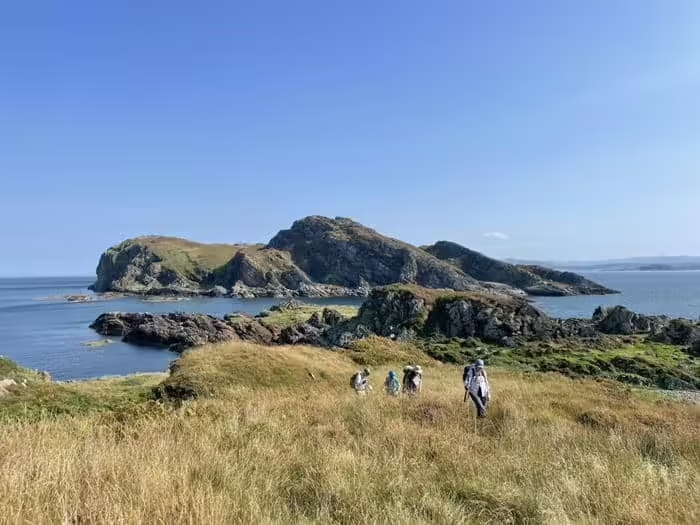There will be plenty of spy stories and real gaffes, most of which we are sure we will never know about. But few people will ever come close to what happened on one of the most famous and magnificent mountains on the planet. A few decades ago, a strange expedition was organized there for unethical purposes. Everything that could have gone wrong went worse. In fact, the plutonium is still there.
Nanda Devi. For those who don’t know what we’re talking about, it is the second highest mountain in India and the twenty-third highest in the world at 7,816 meters. This is not just any peak, it has deep cultural and spiritual significance, especially in the Uttarakhand region, where it is considered sacred. The area surrounding Nanda Devi has been recognized as a UNESCO World Heritage Site for its unique biodiversity. The park protects a variety of species and is an example of the richness of the Himalayas.
In addition to its natural and cultural importance, this settlement has become a symbol of adventure and mountaineering. Since its first ascent in 1936, it has been a challenge for climbers from all over the world. On the contrary, its ecological fragility has limited the area’s ability to protect its environment. This last point, as we will see below, was not always the case. Let’s hope that nature is not vindictive…
The first nuclear test. Not far from the mountain, in October 1964, China’s first nuclear test took place near Lop Nur Lake, which borders the Kuruk-tagh mountains. This test was followed by several dozen others, which put the United States on alert. The CIA investigated how far the Chinese had advanced.
Two years ago, China defeated the Indian army and these initial tests were an example of power and strength. The US agency concluded that they were lagging behind in the nuclear race in a sensitive context like the Cold War. And not only the US, India also felt inferior after the border defeat. It did not take long for the alliance between both countries to materialize.
Odd couple. What did they do? In an era when satellite spying technology didn’t exist today, both countries joined forces and signed a secret agreement to spy on Asians. Like? Literally, send secret agents into the “war” zone. In other words, send spies all over the world, to some of the most majestic mountains on the planet, where China’s nuclear tests are taking place.
If the idea seems a bit filmy, that’s because it is. The proposal from both countries was to use some mountains in India to see what they were doing on the Chinese side. It may seem naive, even innocent, that the spy agencies of both countries would be happy to watch another country thousands of miles away for the simple fact of being on one of the “peaks” of the planet, but history shows that it is so, and in 1965 the “master” plan was given the green light.
Team A. The CIA begins searching for and recruiting spies to carry out the plan. One of these is Robert Schaller, a medical student in Seattle who has received an offer worthy of a Hollywood movie. They need a doctor with experience in electronics and mountaineering in the Himalayas; the combination of these requirements leads them to the student who is first on the list to be filled.
Once the team was formed, months of intensive training began in a secret location. Along with Schaller, there were many celebrities who would become citizen spies like him. For example, Tom Frost, the famous Yosemite climber, or Mohan Singh Kohli, the famous Everest expedition leader who would become the expedition captain. Others were not as well known, but were elites, researchers or professors whose knowledge of nuclear technology put them at the service of the secret alliance between the US and India.
By profession: spies. Of course, we are not talking about normal training. After the initial tests, the level was raised for several months by jumping from helicopters or destroying targets with explosives, and they even handled experimental atomic energy equipment specially developed for the mission. Finally, the team had to prepare for the climb by crawling along the Alaskan rocks with the mission material.
The mission begins. A year after China’s first nuclear test, this team of brave citizens-turned-spies is ready. They all meet at the Sanctuary, a sort of natural fortress in the peaks surrounding the ultimate destination, Nanda Devi. A not-so-important detail: Up until then, only six people had ever made it to the top, and of those six, only three had made it down alive.
Regardless, the plan moved forward with an unexpected companion. It had not been revealed until then, but the team would go up with an extremely heavy surveillance package, a monitoring system that required atomic energy to operate. We are talking about an artifact that included a SNAP 19C generator that converted the heat of plutonium into electricity, which would then be able to track possible nuclear activity (in this case, from China).
Climbing with plutonium. If climbing a mountain with the right equipment was a complex activity, with an extremely heavy atomic engine device it was an act of faith. What’s more, we’re talking about men from very different backgrounds, many of whom were ill-prepared for such a physical task, no matter how many months they spent training.
So during the day the device made their lives impossible and they crawled up the ramp like turtles. But at night things changed and the device was capable of providing extra heat to the spies. And inside the generator was enough plutonium to power the surveillance system for over a thousand years, meaning that in practical terms both the US and India could keep watch on the Chinese for centuries.
It’s all wrong. For a brief moment, it looked like the mission was going well. In fact, they reached the High Camp area, just a few hundred meters from the Nanda Devi peak. What happened? The Sherpas accompanying them were the first to see it coming: a major snowstorm was approaching, and they had to postpone the mission and leave the area as soon as possible. The team leader concluded that they would return to the area when spring arrived. He also ordered that the surveillance package remain on the mountain to speed up the descent.
They saw no other way to escape the harsh weather. They tied the device to the side of the mountain, next to some rocks. The team secured the antenna, two transceiver assemblies, and the nuclear generator to the rocks. Then they hurried off before the predicted snowstorm arrived.
Where the hell is he? You can imagine what happened when spring arrived. The spy team returned to the High Camp site, but surprisingly the plutonium device was not there. One possibility was that the rock outcrop had collapsed from the mountainside in an avalanche, and the generator and seven plutonium rods were probably buried deep in the glacial ice.
The group didn’t know what to do. The nuclear “fuel” might be buried right under their noses, but it was impossible to know exactly where it was. Worse, they thought the Chinese might get their hands on the artifact, with catastrophic consequences that were as unexpected as they were to everyone.
Absolute silence. He decided to keep his mouth shut. Over the years, the CIA sent dozens of mountain climbers with Geiger counters, as well as a fleet of helicopters equipped to scan ice fields and slopes, hoping to find any trace of the missing system. For their part, the team of recruited spies were assigned a plan B: climb a neighboring mountain and set up a similar system (unsuccessfully) to observe explosions and track potential missiles. After completing the failed mission, they joined the search for the missing plutonium, but they never found it.
All documents and photographs taken by these brave citizens turned spies during the missions were confiscated by the CIA, who decided the mission “never existed.” In fact, this story would not have been written if it were not for the publication in 2005 of the book Spies in the Himalayas: Secret Missions and the Perulous Climb by the head of the original expedition, Captain Kohli, who has now revealed the secret missions.
Device. As for the nuclear device, it’s still out there, somewhere in the Himalayas. After the book was published, researchers claimed that water samples flowing from the Sanctuary into the Ganges River showed clear and alarming signs of plutonium-239, an isotope that, unfortunately for the CIA and its peculiar mission, does not occur naturally.
This data gives an idea of the history that took place in the 60s. Perhaps never, perhaps in a few years, decades or centuries, everyone on the planet will perceive a timid signal from one of the peaks of the Earth. It would not be good news, the nuclear generator would wake up from its frozen grave and warn us how wrong we were 60 years ago.
Image | Jaiambey, PickPik, Michael Scalet
In Xataka | Chinese mining is already looking at the Himalayas. The reason is simple: A large rare earth deposit
In Xataka | We pollute before we set foot in the Himalayas: They find ash and metal particles from the Industrial Revolution














